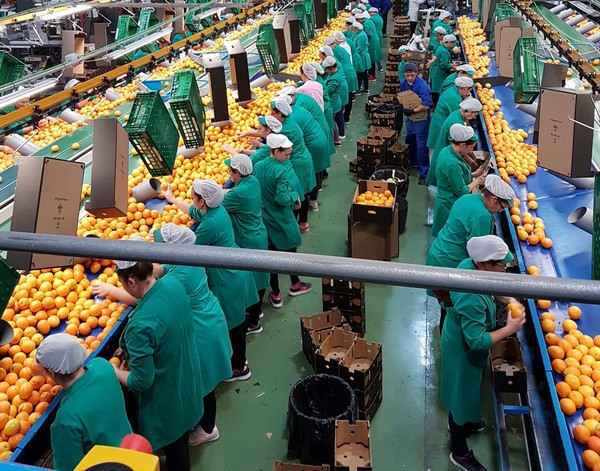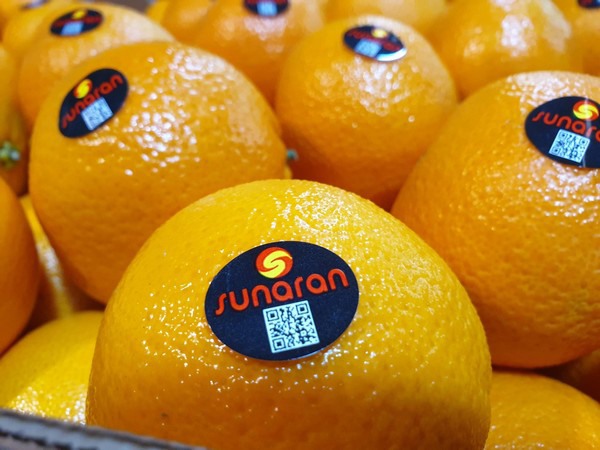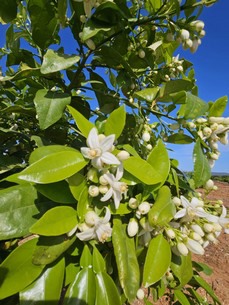The domestic orange campaign started in 2022 with the prospect of a significant drop in the production, estimated at 20% nationally and at 24-25% in Andalusia, according to the first estimates from the regional government. However, in the final stretch of the season, the figures have been confirmed to be higher than initially estimated.

"The data we already have from Sunaran, which are common to all the productive areas of Cordoba and Seville, indicate that we are going to end the campaign with a 35% drop in the harvest compared to last year, almost 10 percent more than initially expected," said Antonio Carmona, manager of Sunaran and president of Palmanaranja.
"The drop in the harvest is happening at the same time as the rise in production costs, which is affecting both the producers and the companies dealing with the packaging, handling or storage, and this has made it necessary for prices to increase. However, that higher price will still not compensate for the decline in the volume."

For months, citrus prices have been reaching "the highest levels of the last 10 seasons," as recalled by MAPA in its weekly price bulletins. This is not only affecting the first or extra categories; the second and industry categories are also recording very attractive prices.

In the wholesale market of Cordoba, the price at origin of 2nd quality Late Late oranges, excluding VAT, stood at 0.32-0.36 €/kg; the 1st quality Navel Powell, Barfield and Chisslet orange stood at 0.45-0.50 €/kg, while the 2nd cost 0.40-0.44 €/kg, and the Valencia Late orange reached 0.48-0.52 €/kg for the 1st class, and up to 0.36-0.47 €/kg for the 2nd.
Regarding the industry, "at the beginning it was thought that there would be a shortage of oranges this season, but in the end the volume has been higher than expected because there has been enough fruit that did not meet the requirements for export. Besides, prices have stood at levels that hadn't been reached for many years, and this year the industry has become a very interesting alternative for the oranges. The price has reached around 0.28-0.30 cents per kilo, while last year it stood at about 0.10-0.11 cents," says Antonio.
"Large retailers have the greatest purchasing power, and if the purchasing criteria remain price-oriented, we will always be at a disadvantage".
The price increase has been unavoidable this year, given the production decline and the higher costs. It was required by a sector that, despite its weight in the global market, has been dealing for too many years with prices that were "too low", says Antonio. At this same time last year, a kilo of oranges for the fresh market cost an average of 13 cents per kilo, according to data from the Prices and Markets Observatory of Andalusia.

However, competition in the European citrus market is very high and, since March, there has been a huge volume of oranges coming from Egypt. "We are aware that we cannot compete with them in terms of prices and we have already noticed a slowdown in the harvest in the last part of the campaign. We understand that it is not going to be anything dramatic, because we only have a small volume left, but it is nevertheless very worrying having to deal with such unfair competition."
"Firstly, because they are allowed to use active materials that are banned for us, and secondly, because they are able to sell at very low prices, since there is an abysmal difference between their production costs and those we have in Europe. They do what they do because their legislation allows them to do so, and no restrictions are imposed in Europe, but what is certain is that it leads to us being in a very disadvantageous position, and although we are in a free market, it should be sought that we play by the same rules."

In the face of this competitive inequality, promotional and awareness-raising work becomes very important to ensure that the European product is appreciated, says Antonio. "Our promotions can be targeted to the consumer, but in the end, the ones with the greatest purchasing power are large-scale retailers, and if the purchasing criteria remain price-oriented, we will always be at a disadvantage." At this point, "it has become necessary to think this through properly, both at national and at European level, if we want European agriculture to survive."
For more information:
Palmanaranja
Avda. Félix Rodríguez de la Fuente, s/n
14700 Palma del Río, Cordoba, Spain
Tel.: +34 957.64.58.82
[email protected]
